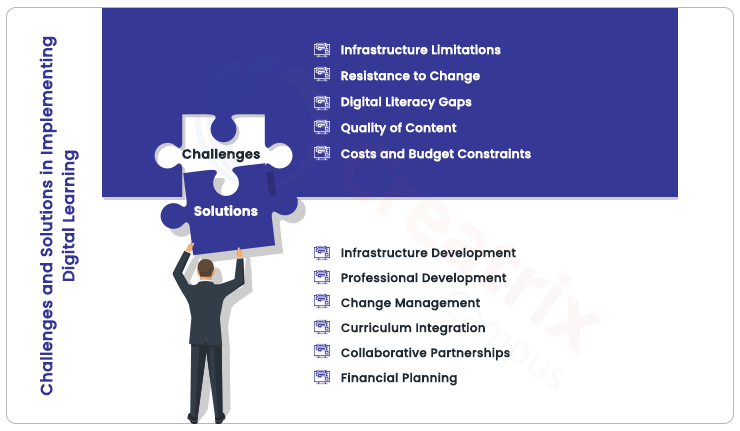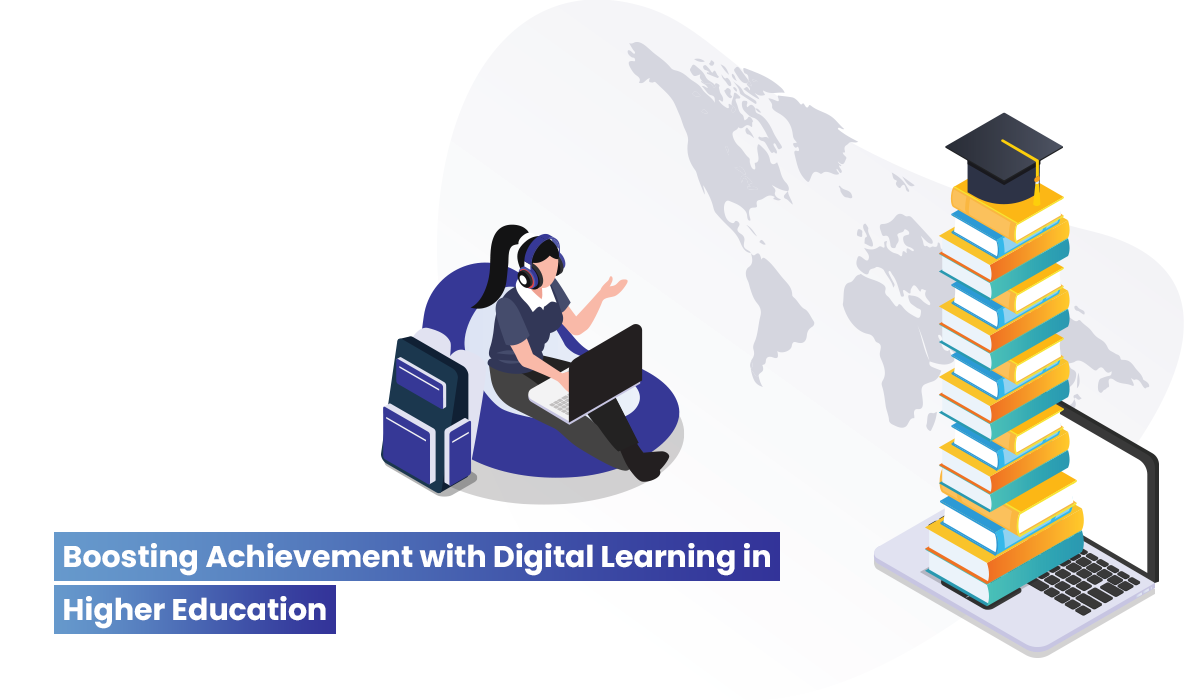Overview
Digital Learning in Higher Education calls for change in the educational ecosystem which will lead to significant improvement in the productivity of the students. Blending technology with teaching and learning in a classroom using digital tools such as laptops, mobile phones, and touchpads not only goes high-tech with digital learning platforms but also provides better communication and interaction between students, which increases their level of interest and curiosity to learn and ask questions. Let’s ponder more in this blog.
Benefits of Digital Learning Platforms in Higher Education

Digital learning will widen the thought process of the student as they will access the study materials shared by their teachers using the modules available on the management system software. For the same problem, with the power of e-learning, students will solve using different ways. All the required data for a student to study will be available within their palm with the power of the cloud – and no more carrying heavy books. When you study you need to evaluate yourself. Now teachers can prepare mock assignments and upload them online for their students, while students can submit their assignments online.
In short, here are the benefits of digital learning in higher education. In simple terms, students can chat or send messages regarding any problems, to which the teacher can respond, and the problem gets solved. Digital learning can save a lot of time. This means students have a lot of time to study efficiently and increase their success rate.
Key Digital Tools and Technologies in Higher Education
- Course delivery, tracking, and administration platforms are referred to as Learning Management Systems (LMS).
- Learning experiences may be tailored to each student’s requirements and performance level with the use of adaptive learning technologies.
- Get access to an extensive range of digital books, periodicals, and research papers through digital libraries and repositories.
- Tools for enabling live online classes and meetings in virtual classrooms.
- Software for generating interesting and dynamic instructional content is available under the category of Interactive Content Creation.
- Resources that let students work together on assignments and projects through online collaboration tools.
- There are enough tools for evaluation and feedback.
- Systems for electronic portfolios—Student Information System platforms that let students present their work and monitor their academic progress.
- Applications that offer learning while on the go are categorized as mobile learning apps.
- Technologies enable immersive learning experiences, such as Virtual and Augmented Reality.
Challenges and Solutions in Implementing Digital Learning

Common Challenges
- Infrastructure constraints include a lack of sufficient hardware and dependable internet connectivity.
- The unwillingness of administrators and teachers to embrace new teaching techniques and technology can be a major pressing challenge.
- The disparities in digital literacy between faculty and students known as the “digital literacy gaps.” is another crucial challenge.
- Financial restrictions when it comes to purchasing training and digital technologies.
Effective Strategies
- Ensure that digital materials are widely accessible by making significant investments in a strong technological infrastructure.
- To help educators try and improve their digital literacy and teaching techniques, give them continual training and assistance.
- Incorporate stakeholders in decision-making processes and take proactive measures to resolve concerns by implementing a phased approach to change management.
- Accurately match material to learning objectives by smoothly integrating digital learning into the curriculum.
- In order to exchange resources and best practices, and cultivate connections with technology companies and educational institutions.
- Construct long-term financial planning and carefully distribute resources to aid achieve digital goals.
- To track student development and modify instruction as necessary, put into practice efficient assessment systems.
Embracing Digital Learning in Higher Education Today!
Digital learning in higher education offers a number of benefits that address the evolving needs of both academic institutions and their student bodies. The advantages are obvious and include more participation, cheaper expenses, and a flexible schedule. To remain competitive and satisfy the expectations of modern education, institutions are pushed to use digital learning technologies and practices. Specifically created with a low-code platform for today’s higher education institutions, Creatrix Campus provides an end-to-end digital solution. Institutions may equip students for success in a digitally-driven society by incorporating these tools into curriculum planning and funding faculty development.
#Digital #Learning #Higher #Education #Enhances #Student #Achievement










